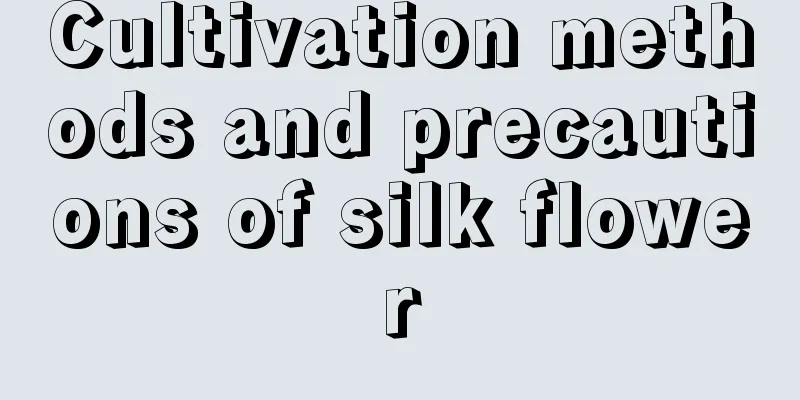Cultivation methods and precautions of silk flower

How to cultivate silk flowerLight and temperatureThe silk flower likes a warm and sunny environment and is cold-resistant and shade-resistant. Therefore, when cultivating the silk flower, it is necessary to give it sufficient light and maintain a suitable growth temperature. WateringThe silk flower needs to be guaranteed to have sufficient water during the maintenance period, but it should be noted that sufficient water should be given during the summer drought; sufficient water supply should also be ensured during the flowering period so that it can bloom luxuriantly and beautifully; in the rainy season, attention should be paid to drainage and no water should be accumulated to avoid root rot. FertilizationIn order for the silk flower to grow healthily, sufficient fertilizer and water are required. During the comfortable growing period, you need to fertilize frequently, once a month. When the temperature is high and the soil is dry, you can apply some thin fertilizer. In winter, reduce fertilization. In addition, after flowering, you can apply quick-acting fertilizer once or twice. Reproduction methodThe propagation of silk flowers is usually done by sowing, which can be done in spring or autumn, but it is difficult for them to survive, so when cultivating silk flowers, most of the time, cuttings are used. Precautions for the cultivation of silk flowerspruneDuring the growth process of silk flowers, pruning is essential, whether it is pruning overlong branches, overly dense branches, dead branches, diseased branches, or withered flowers and rainy buds. Pruning can make the shape of the silk flower beautiful, and facilitate ventilation and light transmission, so that the plant can grow and develop better, reduce the chance of some diseases and pests, and reduce nutrient consumption, so as to bloom better. Pests and diseasesSilk flowers have fewer diseases and pests, and may be attacked by pests such as scale insects, sawflies, aphids, beetles, rose sawflies, as well as diseases such as powdery mildew, black spot, anthracnose, and leaf rust. Prevention and treatment are needed according to the incidence of the disease. |
<<: Cultivation methods and precautions of weeping begonia
>>: Cultivation methods and precautions of Cape primrose
Recommend
Will lilies freeze to death in winter?
1. Will it die in winter? Lily is a perennial her...
Can expired pure milk be used to water flowers? What flowers can be watered?
Can expired milk be used to water flowers? Expire...
What flowers are suitable for growing in Yunfu? What are the city flowers and trees?
1. Climate characteristics of Yunfu Yunfu has mor...
How to plant egg fruit? Egg yolk fruit planting technology and management skills
The egg fruit is also called the egg yolk fruit. ...
How to grow aster flowers to bloom more prosperously
1. Temperature for growing aster Asters mainly co...
How to grow pale snow succulent
1. Soil The choice of soil for growing pale snow ...
When will Shawo radish be available on the market and when will it be planted?
Shawo radish is a special radish and a specialty ...
How to Make Dahlias Bloom on New Year's Day
Normal flowering period of dahlia Its flowering p...
The efficacy of bergamot fruit, pictures of bergamot fruit
1. Efficacy 1. Anti-asthma: Bergamot fruit contai...
Are orchids easy to grow? How to grow orchids?
Orchid is one of the top ten famous flowers in Ch...
The difference between the lucky tree and the rich tree
Morphological distinction The lucky tree can grow...
Four stages of cineraria care
Cineraria seedling stage When growing cineraria, ...
Planting method of yellow wood fragrance, planting environment of yellow wood fragrance
1. Planting environment 1. Light and temperature ...
How to take care of the newly bought Jinhuangxing
1. Soil First observe the condition of the pottin...
How to use the nutrient solution of Brazilian wood and how often to add the nutrient solution
The nutrient solution for the rubber tree is gene...









